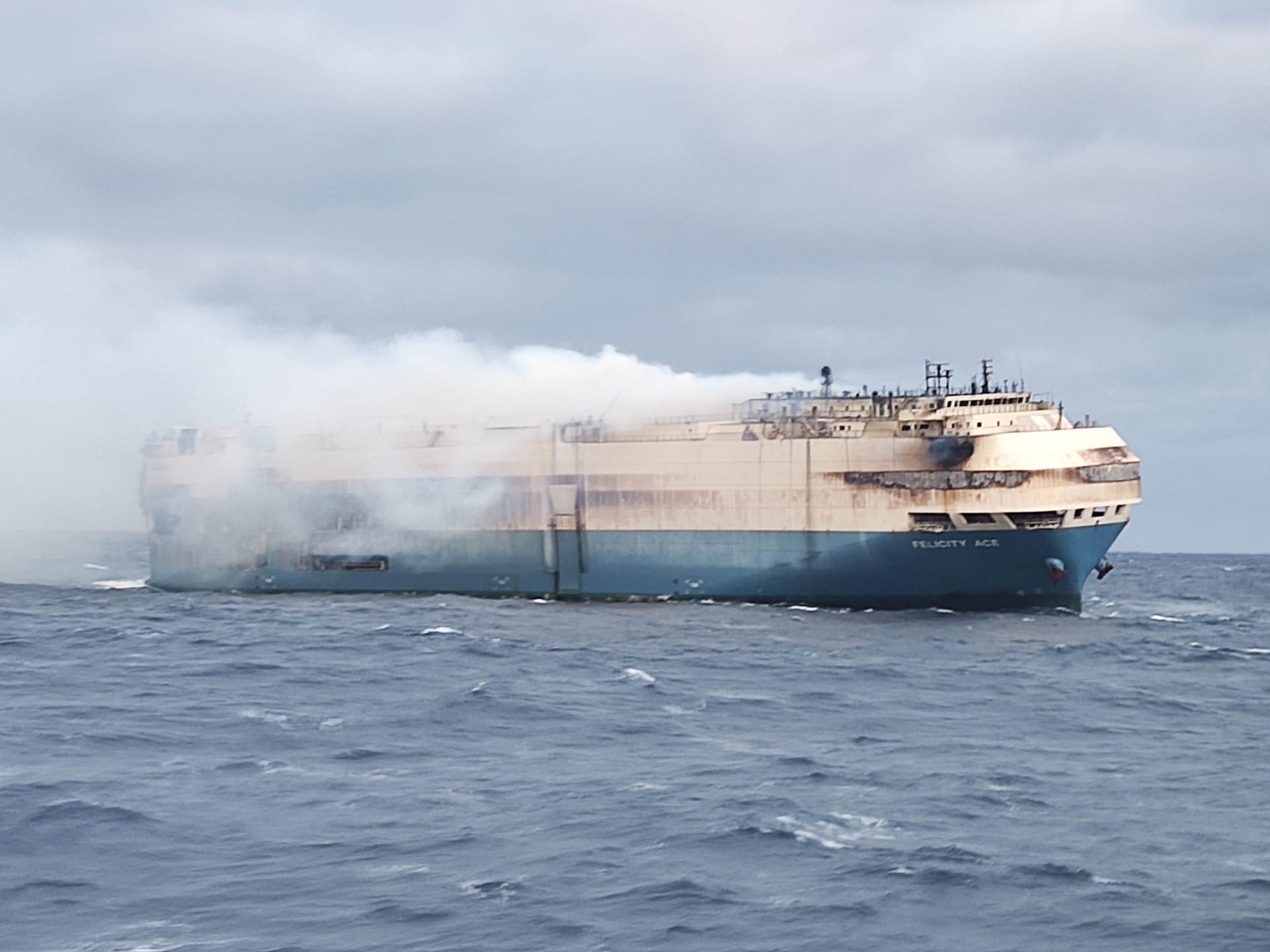There’s many a slip twixt cup and lip …
From the blue oceans we sustain people’s live and ensure a prosperous future.
This is the central sentence that appears on the Mitsui OSK Lines website, which is the domicile of Snowscape Car Carriers SA, Tokyo, Japan.
Yet their Felicity Ace does not bring happiness, on the contrary, it turned out to be a terrible ace of spades.
This cargo ship, flying the Panamanian flag, sank off the Azores islands.
The site of the Portuguese Navy reports a photographic sequence.

SMIT Salvage Pte Ltd. on February 18 publishes the following document:
A team of sixteen experts from subsidiary SMIT Salvage was mobilized yesterday and is present on the Azores where the large car carrier Felicity Ace is currently on fire. The ship was en route from Germany to the United States when the fire broke out. The entire crew has been safely evacuated and large equipment is on enroute from Spain and the Netherlands to assist with the fire fighting.
Also on February 18, Mitsui OSK Lines communicates through its website a disclosure of information on the FELICITY ACE accident which reports:
MOL operated car carrier FELICITY ACE has experienced a fire while underway in the Atlantic on February 16, and all crew has evacuated from the vessel safely. Information regarding this accident will be disclosed in the following website.
MOL regrets for the inconvenience and concern caused. MOL will make every effort to contain the damage and resolve the situation as the main priorities.
A second press release follows on 02 March:
Whilst the vessel was being towed to a safe area since February 25, it sank on March 1 having suffered a list to starboard.
On the site in charge, a chronology of events is listed which tells of a fire that broke out on board.
The following statement continues to report: is still assumed to remain on fire.
Until February 25: the smoke is no longer visible.
From February 16th to February 25th there are 9 days.
On March 1, the ship is reported to have sunk.
Yesterday, March 7: The vessel sank on March 1 around 9AM local time around 220nm off the Azores after having suffered a list to starboard side.
The oil film that was confirmed at the time of sinking of the Vessel remains on the sea surface, spreading thinly and disappearing gradually, but no new oil film has been confirmed.
After consultation with the relevant authorities, the tug and salvage crafts left the site on March 5, and will continue monitoring the area with regular observation by satellite and aircraft.
A thin oil film.
As if that was all.
Nothing appears on the EMSA website.
The cars transported were electric cars, a probable cause of the fire could be lithium batteries, which require special equipment to be extinguished, as said the captain Joao Mendes Cabecas of the port of Hortas interviewed by Reuters.
The Fire Brigade Working Group has drawn up an information handbook which explains in particular the Thermal Runaway and the risk of fire and explosion of ion batteries of lithium.
Do you know how a battery is “disposed of”?
I report verbatim from the Cobat website that is the Compulsory Consortium for Exhausted Lead Batteries and Waste Lead that explains Pyrometallurgy.
The plant recovers metals such as nickel, cobalt and copper, liquefying the battery components at high temperatures.
Lithium and aluminum remain in the residues.
To recover the lithium, additional (expensive) processing steps are required.
The same Environment Area of the European Community declares that Li-ion batteries pose a special threat, as they contain a high percentage of dangerous heavy metals.
Always the source Reuters speaks of a total of about 4000 cars, all luxury: Porche, Audi, Bentley … with a presumable huge amount of battery accumulators.
I don’t know about you, but for me that “oil film” is not covering what has ended up on the bottom of the sea.
Is this really the zero impact we are told?






 Hi I'm Claudia and this is KCDC.
Hi I'm Claudia and this is KCDC.




OPINIONI